Harappa and Indus valley civilisation
Introduction;
Let’s learn about the links between the Harappa and Indus valley civilisation
and other contemporary civilizations.To understand that Parappa is an urban civilization.To know the lifestyle of these civilized people, learn about the important places in the Indus Valley Civilization.To know about the trade, profession, arts and lifestyle in the Indus Valley.
Indus Valley Civilization;
The civilizations and cultures that emerged in the north-west of India and Pakistan around 3000 BC are collectively known as the Harappa and Indus valley civilisationAs this civilization spread beyond the banks of the Indus River, it came to be known as the Indus Valley Civilization and later came to be known as the Harappan Civilisation.This plain civilization is also called the Harappan civilisation because the first city was the Harappan city.The Harappan civilization is an urban civilization.When the Indus Valley Civilization was at its peak, other parts of India also had the Mesolithic and Neolithic periods.
The Discovery of Civilization;
Charles Mason first mentions the horrors of the city of Harappan in his book. He was a researcher of the East India Company.He noted that “that ruined Red Fort is built on a hill with high walls and towers”.
- 1875 – Alexander Cunningham’s report on the Harappan seal.
- 1921 – S. Watts begins excavations in Harappa.
- 1925 – Excavations begin at Mohenjo-daro.
- 1946 – E.M. Wheeler begins excavations in Harappa.
- 1955 – R. Rao begins excavations at Lothal.
- 1960 – B. Lal and P.K. Thapar begin excavations at Kalibangan.
- 1974 – R. Mughal begins studies in Bahawalpur.
- 1980 – A team of German and Italian archaeologists begin surface surveys in Mohenjo-daro.
- 1986 – An American team begins excavations in Harappa.
- 1990 – S. Bisht begins excavations in Dholavira.
The first archaeologist to excavate Harappan , Cunningham.This is the first evidence of the existence of The Harappans.Parts of Harappa were destroyed in the construction of a railway line from Lahore to Multan.Thereafter , Sir John took over as the Director of the Archaeological Survey of India .It was through his efforts that the Harappan studies were started.Most of the places of the Harappan civilization belonged to Pakistan.
Geographical location and settlements;
| In the West | It is located on the Border with Pakistan and Iran. |
| In the North | Shortadukai , Afghanistan |
| In the East | Alam Kheerpur, Uttar Pradesh |
| In the South | Taimabad, Maharashtra |
The Harappa and Indus valley civilisationwas spread over an area of about 1.3 million square kilometers in India and Pakistan.Not only that, it also included six major cities and more than 200 villages.The important areas where this civilization has spread are Rajasthan, Gujarat, Pakistan and Haryana.
The stages of the Harappa and Indus valley civilisation;
- Early Harappan (3000 to 2600 BC)
- Mature Harappa (2600 to 1900 BC)
- Later Harappan (1900 to 1700 BC)
Cities of the Indus Valley (Harappa);
| Cities | Location |
| Harappa | Punjab, Pakistan |
| Mohenjo-daro | Sindhu, Pakistan |
| Lothal | Gujarat, India |
| Kalibangan | Rajasthan, India |
| Dholavira | Gujarat, India |
| Surkota | Gujarat, India |
| Banavali | Haryana, India |
| Rakhikarshi | Haryana, India |
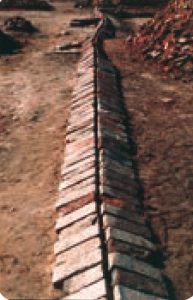
Well-planned streets in cities are streets that are constructed with the facility for sewage to passIt has houses, courtyards and rooms and toilets of the Harappan civilization..Almost all the cities had a closed sewerage system, and drains were covered with bricks and stone plates.The houses in the cities were made of muddy sand bricks and sewage drains of baked bricks, which have more than one site.Perunkulam is a large pond with a courtyard.The walls of the tank were constructed of baked bricks and several layers of the wall and floor were coated with natural tar to prevent water from leaking.The four sides of the clan are paved with footpaths and staircases.The corridor has several rooms to know which have been identified as grain godowns that may have been used for bathing events associated with perunkulam
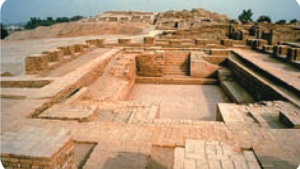
Big pond
Agriculture and animal husbandry;
The Harappa and Indus valley civilisation were engaged in agriculture and cultivated wheat, barley and a variety of millets.They also reared cows, sheep and goats and learned about them.They adopted two methods of cultivation.The cow reared in Harappa is a large type of cow breed called.This type of large bull figure is widely seen on the seals in the Indus Valley.They didn’t know about the horse.
The preparation of craft products;
It is not known what is the primary occupation of the Indus valley people.But the evidence available shows that they were involved in agriculture, making handicrafts, pottery, making ornaments, etc.The Harappans excelled in making handicrafts.Beads and ornaments were made and conch shellswere alsoIn addition, they made ornaments in cornelian beads, jaspers, crystal crystals, steatite foams, copper, bronze, gold metals, conch shells and ceramic terracotta.They exported the artifacts they had created to Mossadomea. This was revealed in excavation research conducted in Mossadoma
Pottery art;
Pottery is made with wheels. They were shot with fire, the earthen pots were red in colour, and they were beautifully embroidered in black.The Harappan people created and used a variety of earthen pots for their daily needs.There are a wide variety of earthen vessels such as water storage vessels, a vessel with a hole, a cup with a narrow grip to hold in the hand, cups that are well spread out in the area where the tip is slightly supported, plates, bowls, etc.The earthen pots thus created contained the royal leaves, the circles in which the fish scale cut each other, the crooked manic lines, the barks on the sides, and the paintings of plants and animals.
metal tools and weapons;
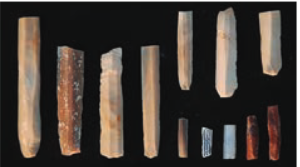
- The Harappan civilization is a Bronze Age civilizationThe Harappans made extensive use of blades, knives and axes made of silica stone calledLight needles, fish triggers, knives, pending plates, face-to-face glasses, anjanam scolding stick are made of copper. They also used tools made of bones and tusks.The Harappan people were not aware of the use of iron.
Clothing and accessories;
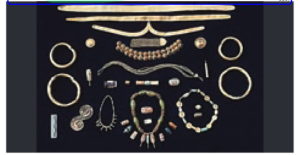
- They used woollen.The people who lived in Harappa used ornaments made of stone and metals.The harappan civilized people knew about cotton and silk.They used ornaments made of semolina, cornelion, copper and gold.They also made and used conch bangles with and without it.
Weighing stones and measurements;

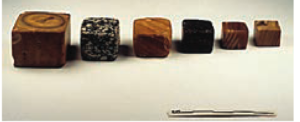
Sepudarasu, Mohanjataro Cubic weight stones
The Harappa and Indus valley civilisation used proper measurements and weighing stones as they were heavily involved in the trade of the Copper was used for weighing tars.From the Harappan civilization, crystalline stone, cubic-shaped weighing stones have been discovered.When examining weighing stones, they have followed the binary number (1,2,4,8,16,32).A small weight measure of 16-ratio is 13.63 grams on a non-measure scale. .One inch on harappa’s scale – -1.75 centimeters at today’s scale.
Seals and script;
Stamps of steatite, copper, terracotta, ivory, etc. have been found in harappan use areas.To this day we are unable to explain harappa’s writing style.Many scholars consider it to belong to the Dravidian language family.More than 5,000 character series have been documented, of which the longest series consists of 26 symbols.The writings of the people of the Harappan civilization were written from the right side to the left.
Arts and entertainment;

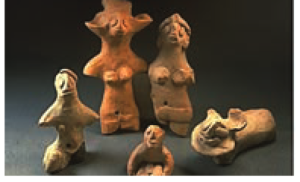
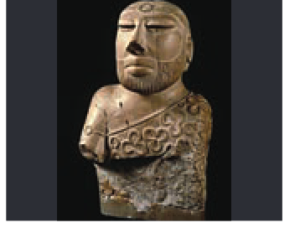
- The terracotta idols found in the Harappan area, paintings on earthen pots and bronze statues show the artistic prowess of the Harappan people.
- A statue of a ‘priest’ or ‘king’ made of steedite has been found in Mohenjodaro.And a ‘dancing woman’ carved out of copper has also been found in Mohenjodaro.
- Harappa, Mohenjodaro and stone sculptures found at Dholavira are important works of art in the region.Toy carts, agitators, pumps, marble bombs, various sports terracotta chips, , show the entertainment game of the Harappan people.
The decline of the Harappa and Indus valley civilisation;
From about 1900 BC onwards, the Indus Valley Serpent began to decline.Due to the invasion of the mothers, the river began to fall due to drought or flooding, decline in trade, and climate changes.People may be displaced towards the south and east direction.
Related news;Harappa and Indus valley civilisation
Mehergarh – a place inhabited by neolithic people, is located in the Bolan River Valley in balochistan province of Pakistan. From the evidence found therein, it is known that the pre-civilisational life dates back to around 7000 BC.A granary of grain with brick walls has been discovered at Ragigarhi in the state of Haryana, dating back to the maturing HarappanCopper was the first metal invented and used by humans.The first script was developed by the Sumerians.The word civilization is derived from the ancient Latin word ‘civis’, which means city.
Conclusion:
The Harappa and Indus Valley Civilization stands as a testament to the remarkable achievements of an ancient society that flourished in the third millennium BCE. Through advanced urban planning, sophisticated engineering, and a complex social structure, these civilizations thrived along the banks of the Indus River. The well-planned cities, such as Harappa and Mohenjo-daro, showcased an impressive level of organization, with intricate drainage systems, standardized brick sizes, and evidence of a script that is yet to be fully deciphered.
The legacy of the Harappa and Indus Valley Civilization endures through its impact on subsequent cultures in the Indian subcontinent. The lessons learned from their achievements and challenges contribute to our understanding of early human societies and their ability to adapt and innovate in the face of various pressures. As ongoing research continues to unveil more insights, the enigma surrounding the Indus Valley Civilization reminds us of the complexities of ancient history and the resilience of human civilizations throughout the ages.

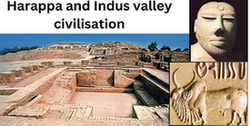


Pingback: Chalukya dynasty for UPSC/TNPSC/NEET/JEE/SGL/SSL/And all
Pingback: Pallava Dynasty,Ruler,Administration,Literature,Inscriptions UPSC